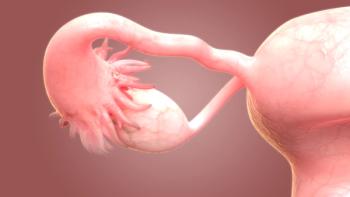
- ONCOLOGY Vol 10 No 1
- Volume 10
- Issue 1
Book Review: Cancer Treatment: 4th Edition
The 1995 Cancer Treatment edited by Dr. Charles Haskell is the fourth edition of his original textbook published in 1980. Cancer Treatment has kept pace with advances in oncology over these 15 years, and the fourth edition includes new
The 1995 Cancer Treatment edited by Dr. Charles Haskellis the fourth edition of his original textbook published in 1980.Cancer Treatment has kept pace with advances in oncologyover these 15 years, and the fourth edition includes new chapterson cancer prevention, cancer screening, biologic therapy, genetherapy, clinical trial design, cancer and pregnancy, hematologiccomplications of treatment, local-regional therapy of lung andliver metastases, and AIDS-related lymphoma. The 1995 editionalso includes 68 new authors.
Dr. Haskell dedicates his book to "postgraduate physicianstraining to become medical oncologists." This is gratifyingrecognition for those physicians- in-training who diligently workto enroll and treat patients in clinical trials, which are essentialto advances in oncologic research and care. As in previous editions,the emphasis of the book is on critical review of state-of-the-artcancer treatment, with practical recommendations for cancer management.
The text is divided into two parts, the first covering generaltopics and the second, the diagnosis and treatment of specificneoplasms. The general topics in part 1 include discussions ofthe increasingly important areas of cancer prevention, molecularbiology, and translational research. The chapter on antineoplasticagents is a good reference source. It lists drugs alphabetically,rather than according to common mechanisms of action.
On the negative side, two statements in the pain management chapter-"forgood reason we have seen the growth of the Hemlock Society, theemergence of Dr. Kevorkian, and repeated attempts to legalizeeuthanasia . . ." (page 227), and "[physician fearsof legal prosecution for providing opiate analgesia prescription]are fostered by the witch-hunt mentality pervading some states'medical board personnel" (page 228)-are value judgements.Rather than improving pain control for cancer patients, this adversarialapproach may have just the opposite effect.
The chapter on paraneoplastic syndromes and the section on investigationaltherapy are well written.
Part 2 on specific neoplasms is the primary emphasis of the text,and sections are organized according to organ system, with chaptersdevoted to the diagnosis and treatment of neoplasms within eachsystem. Individual chapters are succinct, easily readable, andfrequently summarize the molecular biology, histology, staging,diagnosis, treatment, and clinical trials pertinent to the malignancyin table and figure format.
Particularly useful are the "Summary of Treatment" and"Summary of Treatment by Stage of Disease" paragraphsat the end of most chapters, which distill the medical literatureinto standard-of-care options and recommendations for diseasemanagement. If a standard of care has not been established, thisis acknowledged fully, and the author's personal or institutionalapproach to the disease is presented.
Chapters are also well referenced and include editorial suggestionsfor additional reading. Noteworthy sections include those on breastcancer, which include seven chapters exploring its natural history,in situ disease, local surgical and radiation treatment, adjuvanttherapy, and treatment of metastatic disease; neoplasms of thegastrointestinal system; myeloid neoplasms; and lymphoid neoplasms.
Cancer Treatment, 4th Edition, fills a niche betweensimple medical oncology handbooks limited by their brevity andall-encompassing textbooks limited by their thoroughness. It isa valuable resource for all health-care professionals involvedin the prevention, diagnosis, and treatment of malignancy.
Articles in this issue
almost 30 years ago
Recommendations for HIV Counseling of Pregnantalmost 30 years ago
Glossary of Key Termsalmost 30 years ago
Are We Ready to Screen for Inherited Susceptibility to Cancer?almost 30 years ago
Tumor-Suppressor Gene Located in Liver Cancer Cellsalmost 30 years ago
Use of Dexamethasone With 5-HT3-Receptor Antagonistsalmost 30 years ago
Genetic Counseling in Hereditary Nonpolyposis Colorectal CancerNewsletter
Stay up to date on recent advances in the multidisciplinary approach to cancer.





















































































